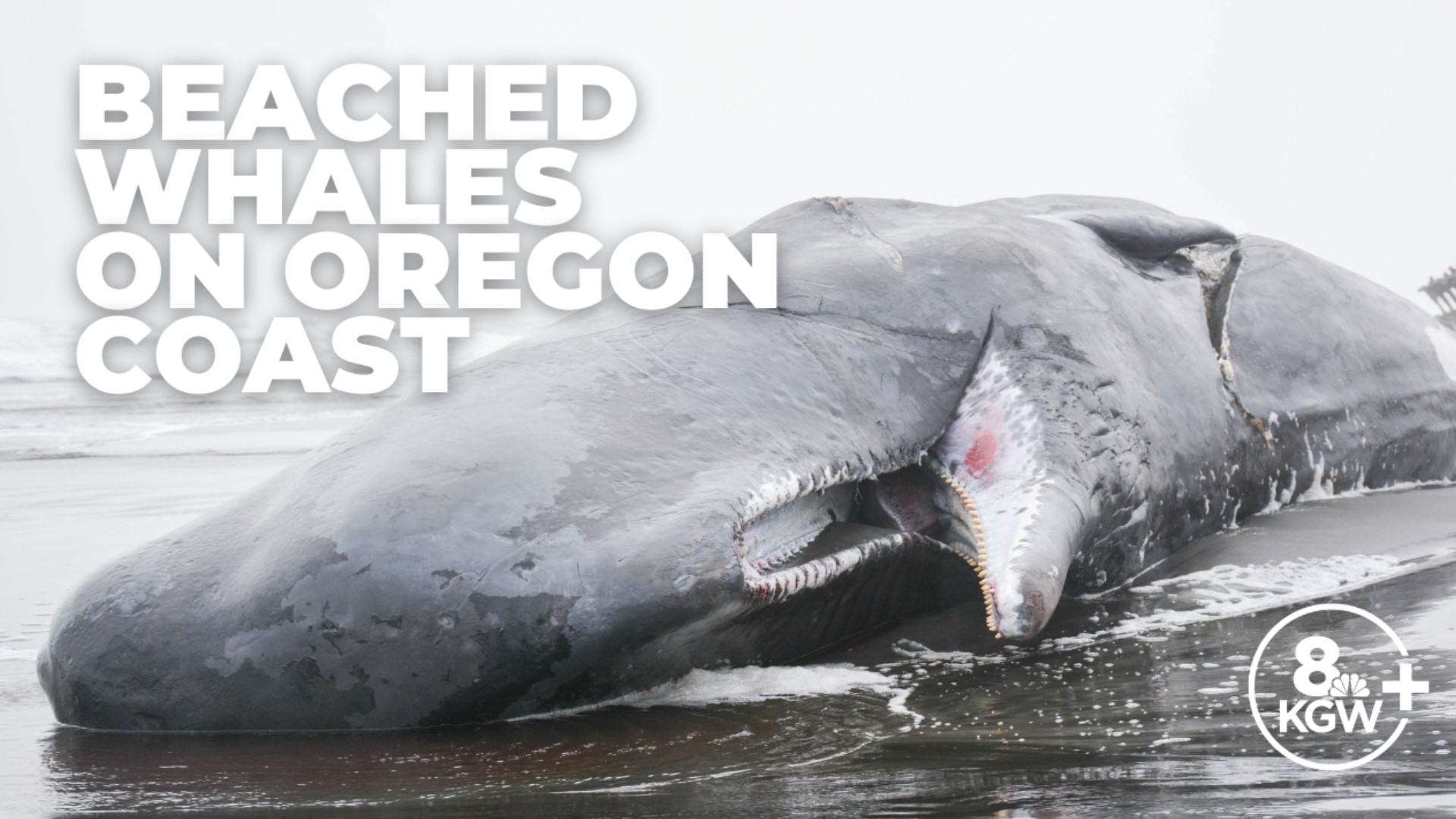CORVALLIS, Ore. — A rare 70-foot-long blue whale skeleton is headed to Canada to be cleaned before it is displayed on the Oregon coast. Back in 2015, the carcass of a blue whale washed ashore in Gold Beach, Oregon.
Although whales washing up on the Oregon coast is fairly common, seeing a blue whale is not. According to Oregon State University (OSU), the last known beached blue whale was more than 200 years ago.
After the appearance of the blue whale, OSU launched a project in collaboration with the Hatfield Marine Science Center in Newport. The goal: preserve the skeleton so that future museum-goers can learn more about the largest animal on the planet.
Step 1: Let it sit
The first thing that researchers did was dismantle the carcass before submerging the remains in Yaquina Bay. This was a major undertaking. It took a team of nearly 30 volunteers, including OSU undergraduate and graduate students, 10 days to remove all of the flesh. When they were done, they had collected nearly 58 tons of organic material that needed to be disposed of.
They then let nature take its course, with saltwater and marine life picking the bones clean over time. Researchers removed the bones from the bay in 2019 and treated them with chemicals to remove leftover oils. Researchers with the Hatfield Marine Science Center said this step is critical to preserve whale bones and keep them from becoming rancid.
Step 2: Processing
The original plan was to ship the bones immediately to Dinosaur Valley Studios back in 2019 when researchers removed them from the bay. But that plan was complicated by the pandemic. Thankfully the bones remained intact for nearly four years. Dinosaur Valley Studios is located in Alberta, Canada, and is helmed by Frank Hadfield. Hadfield has three decades of experience unearthing and reconstructing dinosaurs for museums and institutions around the world.
OSU has tasked Dinosaur Valley Studios (DVS) with completing the steps necessary to preserve the bones long-term, as well as creating the display that will showcase the skeleton when it arrives in Newport. Representatives from DVS were in Newport this month to prepare the bones for transport. The next leg of the project is expected to take several months. It's no surprise, the bones are immense. A short school bus would easily fit inside the whale's mouth.
Step 3: The display
The third and final step will be developing, assembling and transporting the finished display. DVS plans on using an "external cradle system" to hold the skeleton. Essentially it would be suspended by wires from a steel frame. This method does not require drilling, which will keep the bones intact. One of the biggest challenges facing the project remains the sheer size of the bones. There are 365 of them, ranging in size from just a couple inches in length to nearly 20 feet. Although DVS has extensive experience doing detailed reconstructions, this project is by far their largest to date.
Before the skeleton makes its debut in Newport there is still a lot of work to be done. So far, Oregon State’s Marine Mammal Institute has received $250,000 in donations towards the project. However they need about $150,000 more to complete the restoration and finish the display. Click this link if you want to help out or learn more about the project.

